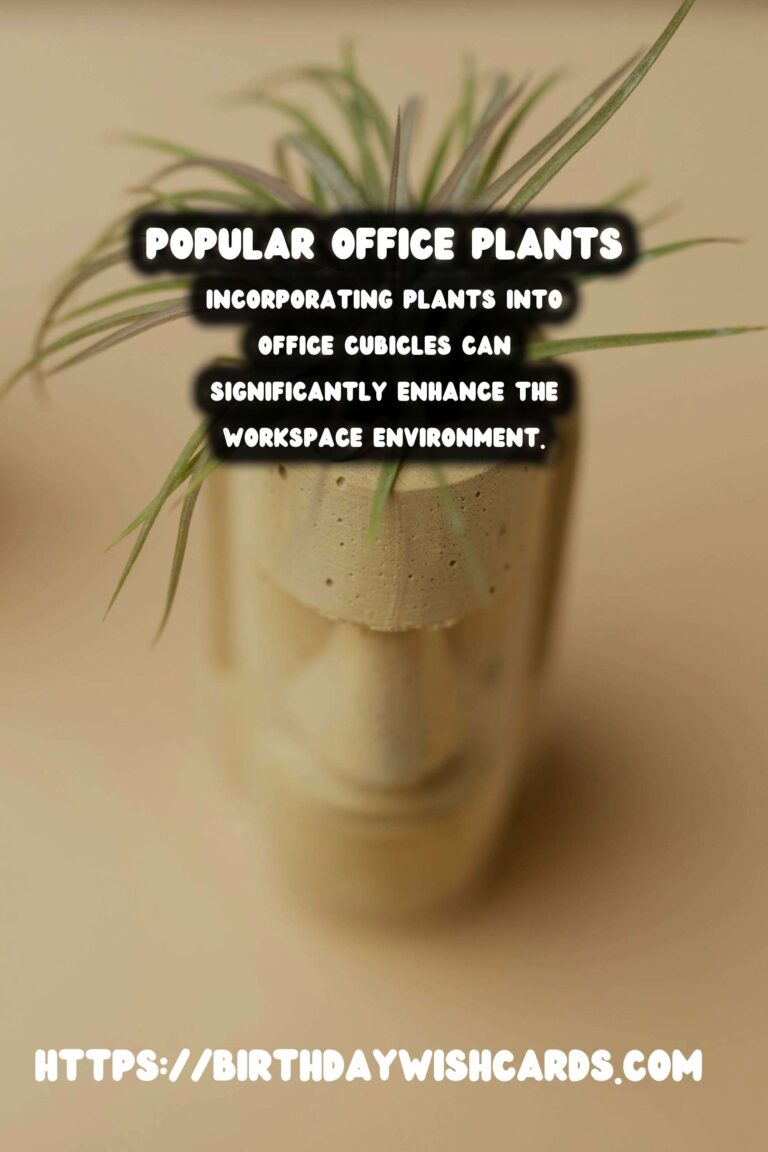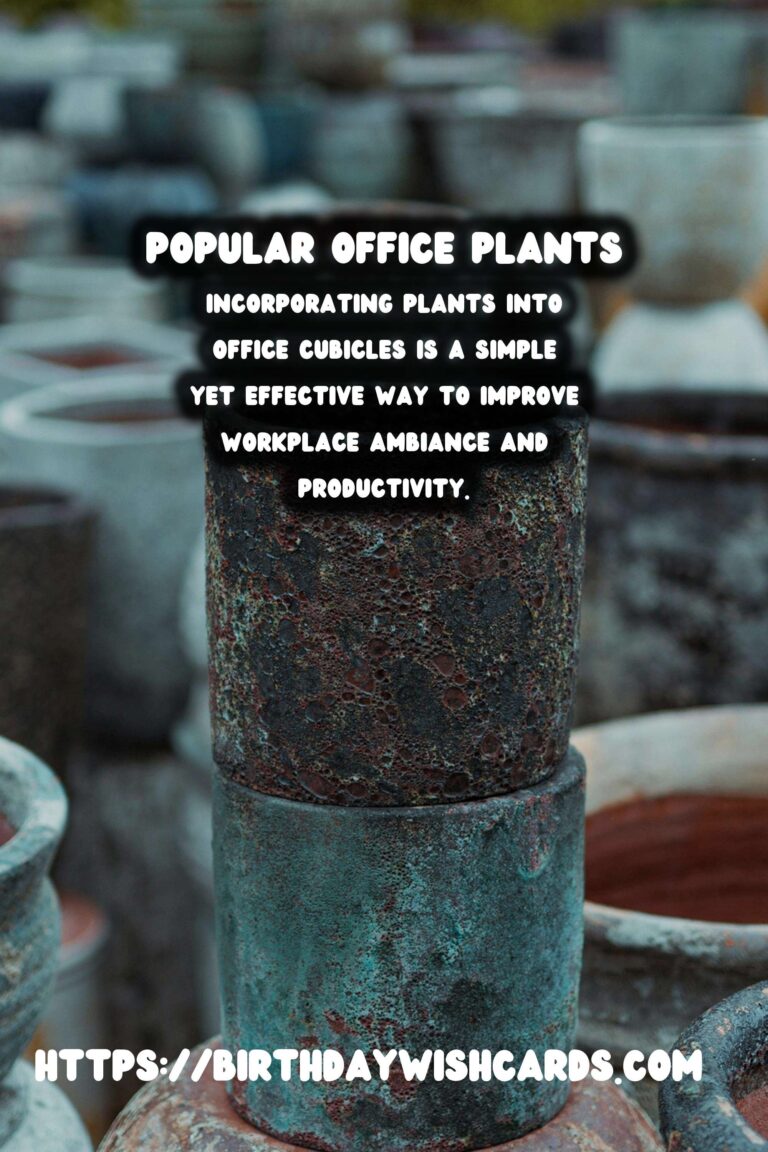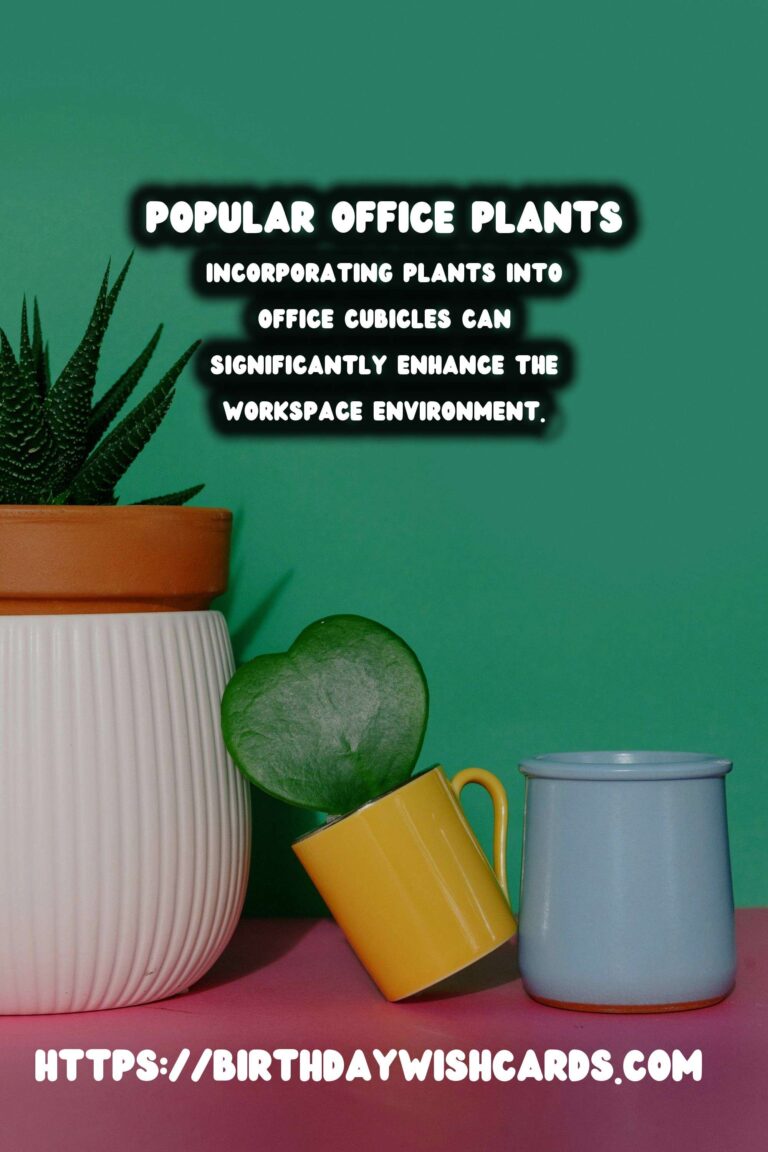
Incorporating plants into office cubicles can significantly enhance the workspace environment, improving both aesthetics and employee well-being. Choosing the right plants is crucial to ensure they thrive and provide maximum benefits without causing inconvenience.
Benefits of Having Plants in Office Cubicles
Plants are not only decorative but also serve various functional purposes. They improve air quality by absorbing toxins and releasing oxygen, which can increase concentration and productivity. Moreover, plants have been shown to reduce stress and improve overall mental health, creating a more pleasant and engaging work environment.
Factors to Consider When Choosing Office Plants
Before selecting plants for your office cubicle, consider the following factors:
- Lighting: Assess the natural light in your cubicle. Some plants require bright light, while others thrive in low-light conditions.
- Maintenance: Choose plants that are easy to care for, especially if you have a busy schedule.
- Space: Ensure the plant fits comfortably in your workspace without causing clutter.
- Allergies: Be mindful of potential allergies that you or your coworkers may have to certain plants.
Top Plants for Office Cubicles
1. Snake Plant (Sansevieria)
The Snake Plant is a popular choice for office spaces due to its resilience and low maintenance requirements. It can thrive in low light and only needs occasional watering.
2. ZZ Plant (Zamioculcas zamiifolia)
The ZZ Plant is another excellent option for office cubicles. It is known for its ability to survive in low-light conditions and requires minimal watering.
3. Spider Plant (Chlorophytum comosum)
The Spider Plant is a favorite among office workers due to its air-purifying qualities and easy care. It can adapt to various lighting conditions and only needs moderate watering.
4. Pothos (Epipremnum aureum)
Pothos is renowned for its ability to thrive in a range of environments. Its trailing vines can be a decorative addition to any cubicle, and it requires minimal maintenance.
5. Peace Lily (Spathiphyllum)
The Peace Lily not only beautifies a space with its striking white flowers but also helps in purifying the air. It prefers low to medium light and needs to be watered once the soil feels dry.
Tips for Maintaining Office Plants
To ensure your office plants remain healthy and vibrant, follow these tips:
- Regularly dust the leaves to allow for optimal photosynthesis.
- Avoid overwatering, which is a common mistake that can lead to root rot.
- Rotate plants occasionally to ensure even light exposure.
- Check for any signs of pests and take immediate action if necessary.
Conclusion
Incorporating plants into office cubicles is a simple yet effective way to improve workplace ambiance and productivity. By selecting the right plants and providing proper care, you can create a refreshing and inspiring workspace.
Incorporating plants into office cubicles can significantly enhance the workspace environment. Plants improve air quality by absorbing toxins and releasing oxygen. Choose plants that are easy to care for, especially if you have a busy schedule. The Snake Plant is a popular choice for office spaces due to its resilience and low maintenance requirements. Incorporating plants into office cubicles is a simple yet effective way to improve workplace ambiance and productivity. 









#OfficePlants #CubiclePlants #WorkplaceWellness #IndoorPlants #OfficeDecor



